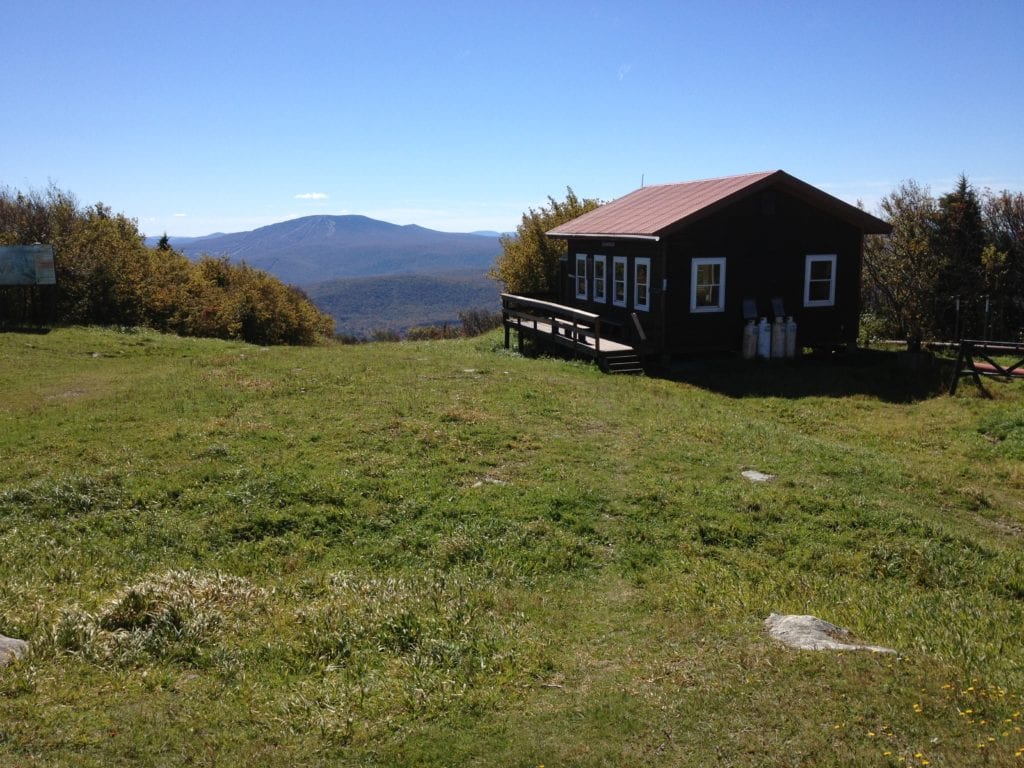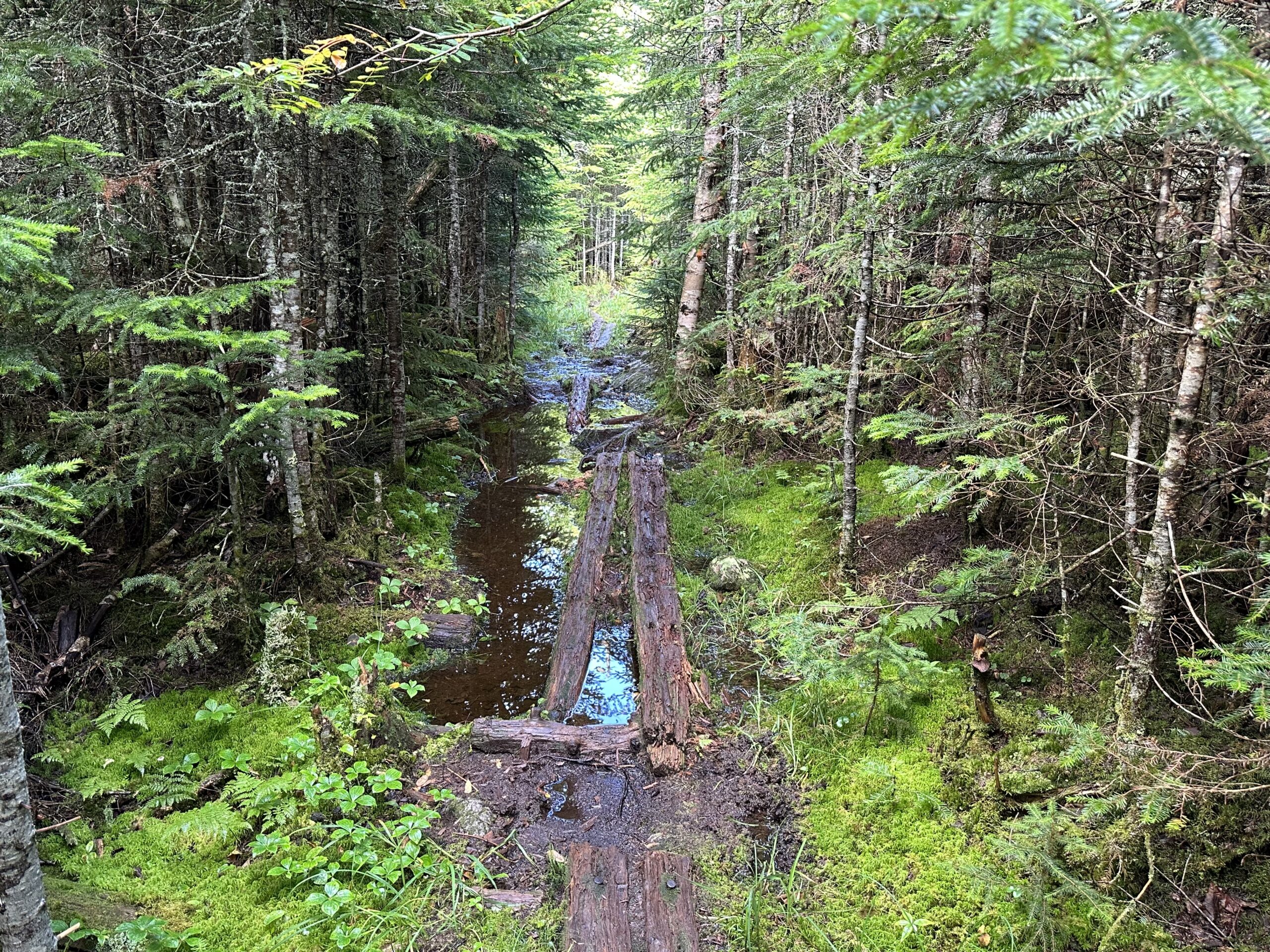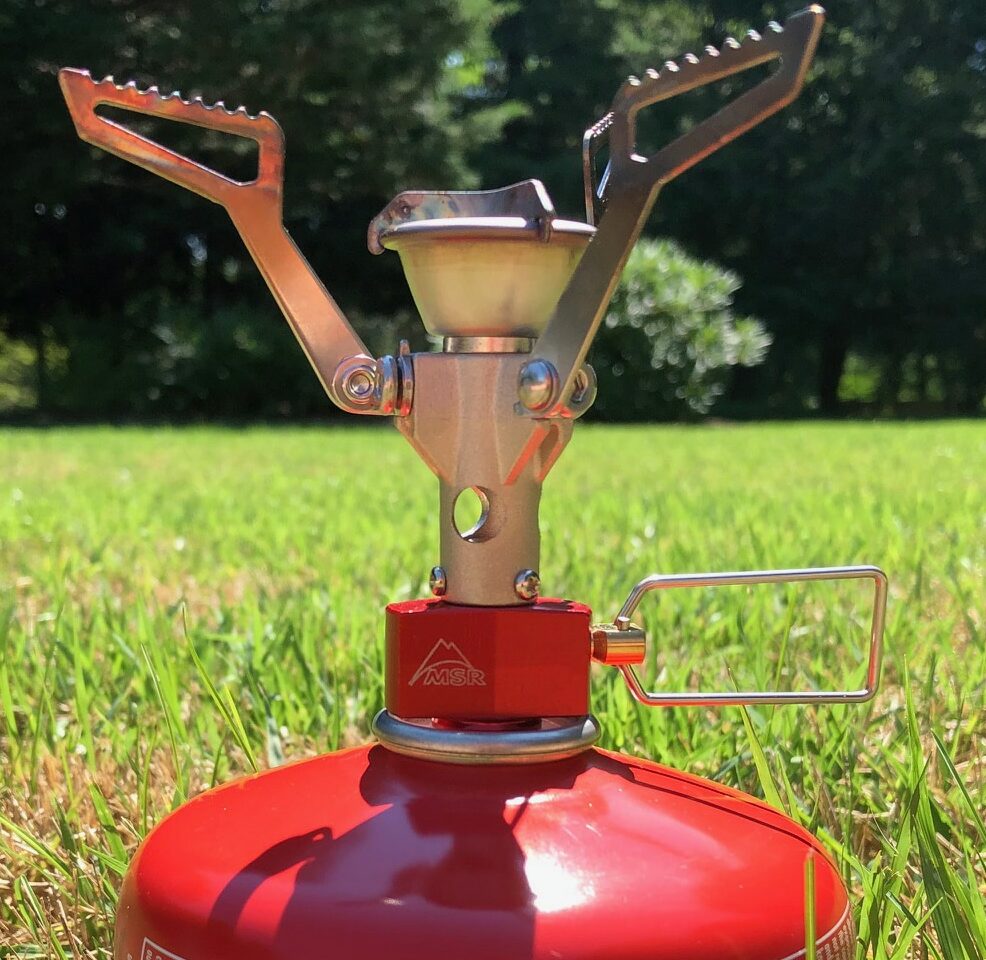As a woman backpacking solo, one of the most frequent questions I’ve been asked over the years is, “Aren’t you afraid to Hike Alone?” Solo female travel is often frowned upon, especially by family, but my answer has always been no – emphatically no.
I’ve rarely had a bad situation occur on any trails I’ve hiked, and I have always trusted my intuition and instincts. The few problems that have occurred, without fail, have been when I’ve not followed my “internal voice.”
All this said, though, I’m not naive. Wherever there are humans, there is always a certain amount of uncertainty, and over time I’ve learned to trust my intuition and instincts. I believe my “inner voice,” intuition, whatever you want to call it, comes primarily from experience.
How Does Intuition Work?
There are numerous opinions on what drives intuition.
I believe intuition is your mind’s rapid reaction to triggers that are very subtle and complex. This processing by your brain is similar to a computer working in the background. The processing is so fast that you only have time to react.
As experiences occur over time, you accumulate information to process. The more information you collect, the better your decisions – if you pay attention.
A Woman Backpacking Solo – Camping
I started in the Southern Appalachians, on and off the Appalachian Trail (AT), when I was a child. The AT taught me some of my most valuable lessons, and because it is arguably the most popular trail in the United States, many of these lessons involved people.
Camping comes in many shapes and sizes along the AT. There are shelters, enclosed cabins, tenting platforms, Lodges, established campsites, hostels, etc. The Appalachian Trail has no lack of places to camp, and each one comes with its advantages and disadvantages.
One firm guideline I typically follow involves where I camp. If I’m camping alone, I stay a minimum of 2 miles from the nearest road. This includes old forest service roads that appear not to have been used recently. I don’t camp near state park day-use areas, parking lots, or anywhere people congregate.
In long-distance hiking, there are always exceptions. These can be driven by time, weather, people, etc. They happen, but I generally adhere to the 2-mile rule when camping solo.
Shelters

The most common shelters are the rough three-sided structures spaced every 8-12 miles along the AT. These are gathering spots for people and critters. These shelters are used extensively on other trails, like the Long Trail, Northville-Placid Trail, etc. You find them sprinkled along the New England Trail, Benton Mackaye. These types of shelters are fairly common.
Some of these shelters have fireplaces, picnic tables, and even hanging baskets. The majority are rough, three-sided structures that protect hikers from the elements.
I rarely stay in shelters. Mice are often a nuisance; even with earplugs, the snoring typically keeps me awake. I will stop in to make a meal, get water, or sign the log and visit with other hikers, but I like to move on and find another place to camp.
Shelters have not always provided safe environments, so I’m careful at any shelter.
In 1998 I hiked southbound on the AT. Arriving at a shelter in Maine, I was greeted by what appeared to be a casual businessman with a small leather suitcase. I watched as he muttered to himself incessantly and angrily while opening the suitcase. It was filled with ropes, a few articles of clothing – and a small hatchet.
Two other male hikers were in the shelter at the time. It took us about 1 minute to pack back up before casually announcing we were moving on since it was early. We hiked until well after dark.
There was also the “Naked Hikers Incident,” numerous drug-induced parties, homeless people, fistfights, and constant midnight arrivals.
Shelters are not at the top of my list of places to rest easily.
Camp Sites
Established campsites are fine, but I always check them closely and walk the entire camping area, not just the site where I want to set up my shelter. Do they appear to get a lot of day use? Is there trash around the areas or in the fire pits? Are they near roads? Is there room to set up without cramming next to other tents or shelters?
If the established site is not clean or if it is easily accessed, I usually hike on for at least another mile. I would much rather find a clean, safe campsite, even if it is not in an “established” location.
The best campsite is one that has not been used, with good drainage and privacy. However, this is sometimes frowned upon since corralling people into one location keeps the rest of the wilderness in better shape. This is not always what is safest, but I practice leaving no trace principles, leaving all sites in the same or better condition than I found them.
Choosing a Campsite is very important, and I’ve provided more information in this article on “How to Choose a Campsite.”
Lodges/Hostels
I’ve grouped Lodges and Hostels together because they often have similar environments. Whether staying at the AMC Huts in New Hampshire, or a hostel in Leadville, Colorado, you will encounter some of the same people and situations.
Many of the hostels/lodges I’ve stayed in are communal. You sleep together, eat together, and hang out together. This can be a lot of fun or a little irritating. Much of that depends on a person’s personality and what they want from their stay. Not all lodging is created equal, but a few things I try to remember are listed below.
- I may have mentioned this already – TAKE EARPLUGS! Actually, take them anywhere you sleep – hostels, shelters, motels, lodges.
- These are all excellent environments for kids, and they have a lot of energy. They will race the hallways, weaving in and out of your bunk beds and whispering all night, so TAKE EARPLUGS!
- Bring your sleeping bag and mat. Many provide bedding, but I’ve heard too many bed bug stories and had one of my own (picture below).
- Each hostel varies across the spectrum from four-star to a storage closet. I’ve stayed in garages with a plastic mattress on the floor and in someone’s home in a beautiful private bedroom. Often, I pitch my tent in the yard, but some hostels don’t allow this, so check before making a reservation.
- Secure Belongings – Secure your belongings if you are going out to eat, run errands, etc. You may think you know everyone where you are staying, but how long have you really known them? You will develop friends for life on the trails, but the trails are also a microcosm of humanity – good and bad.
A Woman Backpacking Solo – Hitch Hiking
Hitch Hiking is often frowned upon by our parents, the media, and anyone who has watched a horror movie over the past 30 years. Heck, solo travel, in general, still draws slight frowns. I could probably write an entire post on this hitchhiking alone! I’ll admit to having one negative experience, but fortunately, I could extricate myself quickly.
To put this in perspective – I have probably hitchhiked over 300 times in my lifetime and have had one harrowing experience. Over those 300 hitches, I have also had multiple positive, life-changing, and memorable interactions.
My method for hitchhiking has not changed much over the years. I have a few simple steps that I follow and that other hikers have used successfully.
- Hitchhike with other hikers
- Review the location where you are hitching from
- Minimal Effort & Appearance
- More Aggressive Approach
- Protecting Your Belongings
Hitchhike with Other Hikers
Safety in numbers is real, and solo travel for women still has risks. If you have a chance, hitch with other hikers going into town. Not only is this safer, but in some instances, you may want to split costs for things like motels, rides, etc.
Hitchhiking Location
When leaving a trail to hitchhike into town, there can be multiple locations from which to exit the trail. If you have an APP like Guthook, check out other hikers’ comments. Other guides provide information also – Yogi’s Town Guides, Pmags End to End Guides, etc. Information in these resources will tell you the best places to catch rides.
Location, location, location! Most of the information will tell you where it is easy to get a ride and where it is notoriously hard. Rest stops and trailheads may sound easy, but if they have a high number of tourists (like on busy highways), it may not be as easy as you expect. We solo travelers and hikers may look scary wandering out of the woods, all dirty and smelly.
Once you arrive at the spot you will be hitching from, look around. I always ensure I situate myself so vehicles can see me as they are approaching from a distance, making it easy for them to pull over. I also make sure I’m on the side of the road where the car or truck is traveling. Finally, make sure the vehicle has room on the road to pull over.
Getting a Ride with Minimal Effort
Tidying up is the first thing I do when getting ready to hitchhike. Hikers can be pretty smelly after a few days on a trail, so I usually wear my semi-clean town/sleeping shirt or jacket.
I brush off the mud and take off my sunglasses and hat. I’ll put on a bandanna if I have one. Seeing my face and eyes makes drivers more comfortable and improves my odds of getting a ride.
This summer, I passed a hiker in a black hoodie with the hood up, wearing dark sunglasses, trying to hitchhike on the Colorado Trail. Later that afternoon, I saw him, and he never got a ride on a fairly busy road that should have been a relatively easy hitch. Hitchhiking is an activity where PERCEPTION is critical to success!
Small towns know there are trails nearby, at least on the longer or more traveled routes. The exception for me was the Continental Divide Trail. I hiked the CDT in 2009 and can’t tell you how many times I had to explain exactly what I was doing to confused ranchers. This means that people will more readily pick up hitchhikers headed into town.
I’ve used signs in places where trails are not well-known and locals have very little knowledge of the nearby trails. “Hiker to Trail” has always proven effective. Cardboard, bandannas, paper – anything you can scribble “Hiker to Trail” on will usually work.
More Aggressive Hitchhiking Techniques
Then there is the more aggressive approach to hitchhiking. Trailheads are often the right place for this method. The assumption is that people parked at trailheads are of “like mind,” which is usually the case. This usually comes from day hikers, peak baggers, backpackers, horseback riders, etc.
Working the parking lot in the late afternoon when people return from their adventures is often a good approach. Ask people if they will give you a ride. They probably know you are a thru-hiker. You can also strike up a casual conversation about hiking. Within minutes you will probably get a ride.
When backpacking in August, I arrived at Cottonwood Pass and propped up my backpack against a fence by the trail map kiosk. Tourists stopped to take pictures and began asking questions. Within 10 minutes, I had several offers of a ride while I waited for other hikers. One of them was even from a couple going in the other direction!
Actively pursuing a ride also allows you to choose your ride. It is always nice when you can decide who you want to ride with into town.
Protecting Your Belongings
Protecting Your Belongings is critical. Losing your backpack or even some of your critical gear can end your hike or trip. When you get in the vehicle, put your backpack on your lap or at your feet. Don’t put it in the car’s trunk or the back seat. The last thing you need is to step out of the vehicle and have it pull away with your stuff!
Ensure that your gear and extra clothing are inside the backpack or attached to it, like your hiking poles or umbrella. I have lost my hiking poles twice because they were not connected to my pack, and hiking poles are not inexpensive.
A Few Other Do’s and Don’ts
I’m more of a passive hitchhiker. It is probably the southern in me – the ingrained sense of politeness and guilt at making someone do something they don’t really want to do, thus feeling uncomfortable. Southern guilt is a powerful force.
Because I take the more passive approach, I follow a few simple rules.
- Turn down a questionable ride politely, of course. Because I don’t want to hurt anyone’s feelings, even scary people, I usually tell them, “I’m waiting on my friends behind me on the trail.”
- Turn down all vehicles with drunk drivers or evidence of drinking, like cans, bottles, etc. A positive out West is that they usually give me a beer before driving away.
- I keep my money and credit cards in my pocket, not my backpack. My backpack has been stolen (not while hitchhiking), so I keep my money and insurance cards, even when I’m hiking.
- Don’t ride on the back of a flatbed truck, even if there is a chained spare tire to hold on to – don’t do it!
Town Stops
Town stops are one of the joys of long-distance hiking. I love the people, food, and general experiences I have in this country’s small towns. I’m still always aware I’m a solo female traveler.
Many hikers like to visit restaurants, bars, etc., and chat with the locals, and I’m a little more social after being alone for several days, so I’m no exception. I try to ensure I don’t provide too much information in social situations. I keep my conversations friendly, never drink more than a beer or two, and try to restrict myself to group settings with other hikers if possible.
I avoid telling people I’m hiking alone or anything about my schedule. Of course, there are exceptions – like if I’m talking with other women, hikers I know, or couples over 80. I also use my intuition. If something tells me to end the conversation, I end the conversation since my brain has recognized a red flag I probably missed.
A Woman Backpacking Solo – Final Thoughts
Ultimately, everyone has to decide what constitutes their own level of safety. I would be fibbing if I said I did not find myself in some stupid situations when I was young. I will say, though, that I would never dream of putting myself in those same circumstances now, and fortunately, my computer brain has filed that data in the “young idiot” file.
In most cases where I have found myself in bad situations, I knew I was making a questionable decision and did not listen to my “inner voice.” Now, I hear and trust the experience driving my intuitions. They rarely steer me wrong.



